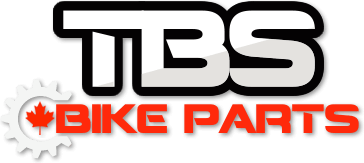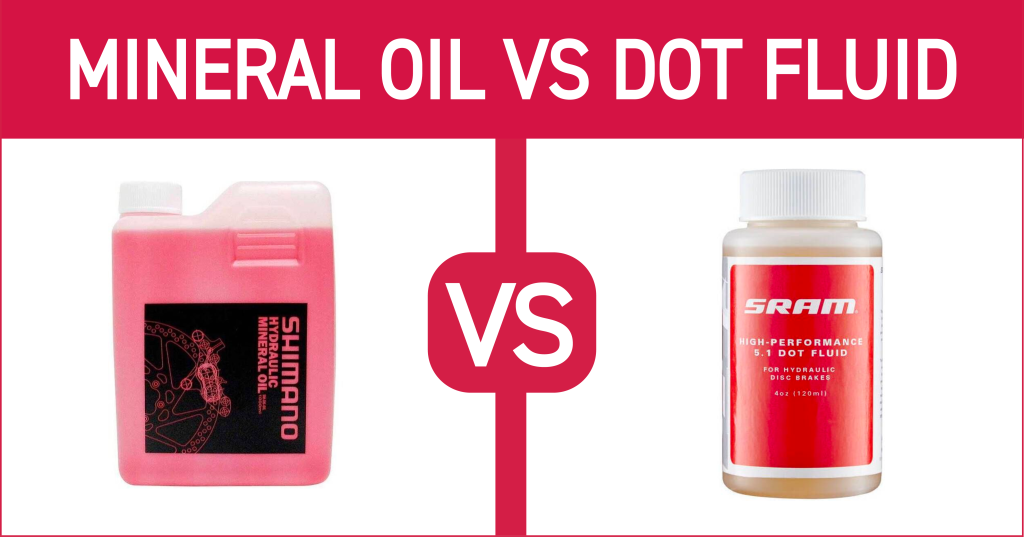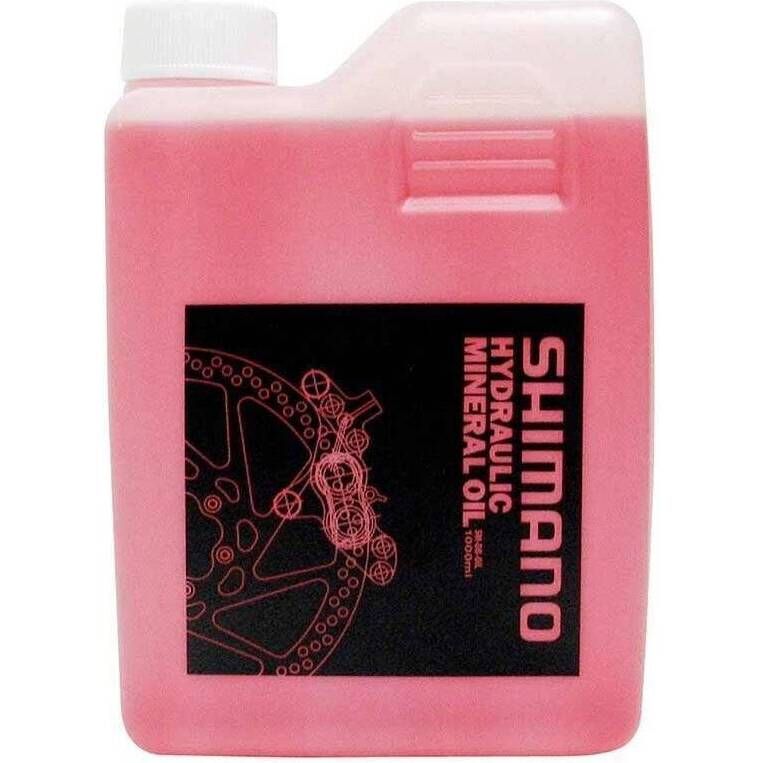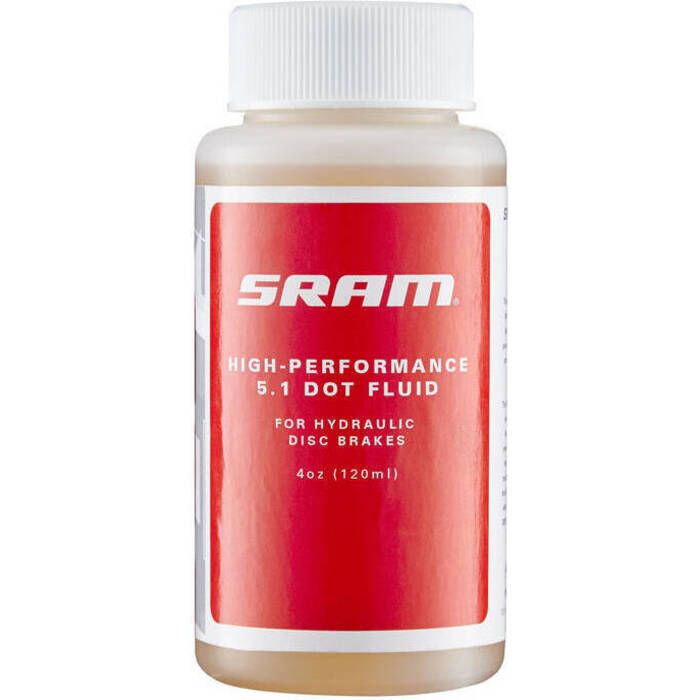Mineral Oil vs. DOT Fluid
Mineral Oil vs. DOT Fluid: Mineral oil and DOT (Department of Transportation) fluid are two different types of hydraulic fluids commonly used in mountain bike brake systems. Although each have their own set of characteristics and is associated with specific brake systems. In the following article we are going to compare the difference between mineral oil and DOT fluid.
Brake fluid is an essential part of the hydraulic braking system. Hydraulic disc brakes use fluid pressure to transmit force from the brake lever to the brake caliper, resulting in the clamping of brake pads onto the disc rotor. The pressure that is applied at the brake lever would not be transferred to the caliper, rotor, and pads without brake fluid.
Mineral Oil
Mineral oil is commonly used as brake fluid in some mountain bike hydraulic disc brake systems. It is a type of hydraulic fluid that serves as the medium for transmitting force from the brake lever to the brake caliper, allowing for effective braking. Here are some key points about mineral oil for mountain bikes:
Common Use:
Hydraulic disc brake systems manufactured by companies like Shimano use mineral oil. Shimano's mountain bike brake systems, such as those in the Deore, SLX, XT, and XTR series, typically use mineral oil.
Properties:
Less Corrosive: Mineral oil is less corrosive than DOT fluid, which is an alternative brake fluid used in some other brake systems.
Stable Performance: It does not absorb water, contributing to stable brake performance over time.
Compatibility:
In short, mineral oil is system specific. As a result, different brake manufacturers may use different formulations of mineral oil.
Seal Compatibility:
Less Aggressive: Mineral oil is generally less aggressive on rubber seals compared to DOT fluid, which can contribute to longer seal life.
Maintenance:
Fluid Replacement: Like any brake fluid, mineral oil should be replaced periodically according to the manufacturer's recommendations to maintain optimal brake performance.
DOT Fluid
(e.g., DOT 3, DOT 4, DOT 5.1):
DOT fluid, or Department of Transportation fluid, is commonly used in certain mountain bike hydraulic disc brake systems. However, it's important to note that DOT fluid comes in different specifications, including DOT 3, DOT 4, and DOT 5.1. As a result, each specification has different characteristics, including boiling points and viscosity. Here are some key points related to using DOT fluid in mountain bikes:
Types of DOT Fluid:
DOT 3, DOT 4, DOT 5.1: As mentioned above there are different specifications of DOT fluid, including DOT 3, DOT 4, and DOT 5.1. Each type has different characteristics, including boiling points and viscosity. It's important to use the type specified by the brake system manufacturer.
Common Usage:
SRAM and Hayes: DOT fluid is commonly used in the hydraulic disc brake systems of some mountain bikes, especially those manufactured by SRAM (e.g., Guide series) and Hayes.
Properties:
Hygroscopic: DOT fluid is hygroscopic, meaning it has a tendency to absorb moisture from the air over time. Consequently, this can lead to a decrease in boiling point and brake performance if not properly maintained.
Boiling Points: Different DOT fluid types have varying boiling points, with higher DOT numbers generally indicating higher boiling points. This is important for brake systems subjected to high temperatures during heavy use.
Compatibility:
System-Specific: DOT fluid is specific to the brake system it was designed for. As a result, different brake manufacturers may use different formulations of DOT fluid, and using the correct fluid is crucial for optimal performance.
Seal Compatibility:
Aggressive: DOT fluid is aggressive on certain types of rubber seals. As a result it's essential to use the fluid recommended by the brake manufacturer to avoid damage to seals.
Maintenance:
Fluid Replacement: Regular maintenance is crucial, and brake fluid replacement intervals should be followed according to the manufacturer's recommendations to ensure consistent and reliable brake performance.
Our Take
In general, the choice between mineral oil and DOT fluid often depends on the brake system in use. Manufacturers design brake systems with specific fluids in mind, and using the wrong fluid can lead to brake malfunction and safety issues. Always refer to the brake manufacturer's specifications and guidelines to ensure proper fluid selection and maintenance.
In summary, the key differences lie in their properties, compatibility, and usage in specific brake systems. Furthermore, it's crucial to follow the recommendations of the brake system manufacturer to maintain optimal performance and safety.
Although we don't carry any mineral oil or DOT fluid, we do stock a wide variety of brakes from Shimano, SRAM, and TRP. You can shop our full selection of mountain bike brakes here. We offer free shipping on all orders over $149CAD. Orders are all processed and shipped within 24 business hours as well.
Spend less and ride the best with TBS Bike Parts.
Related Articles
HOW TO CHOOSE THE RIGHT MTB BRAKE
NEW SRAM CODE BRAKES NOW AVAILABLE
5 REASONS YOU SHOULD UPGRADE TO WIRELESS SHIFTING FOR YOUR MTB
2 PISTON VS. 4 PISTON MTB BRAKES – WHAT’S THE DIFFERENCE?



